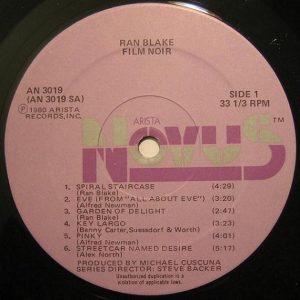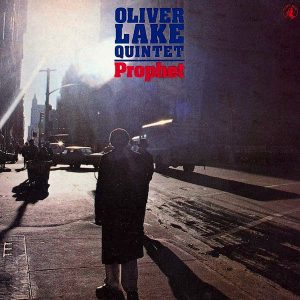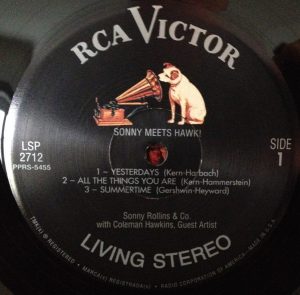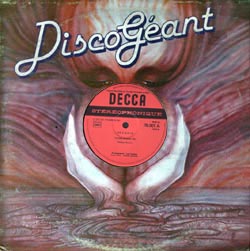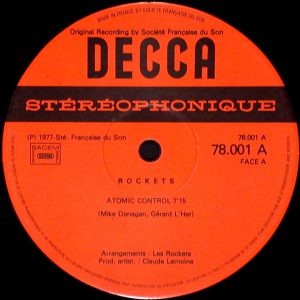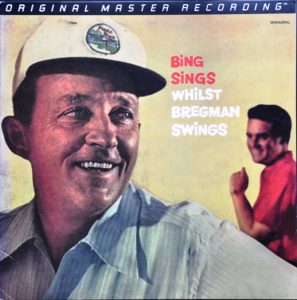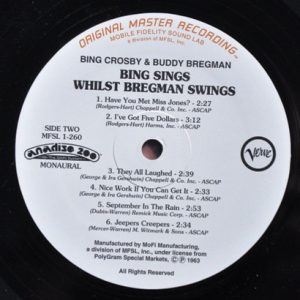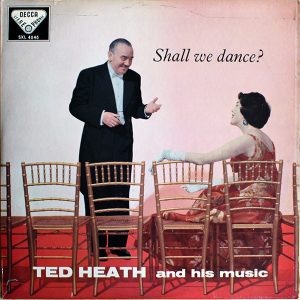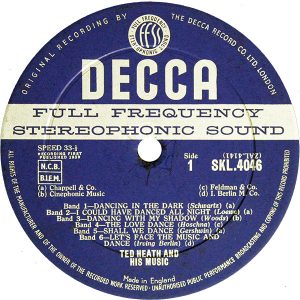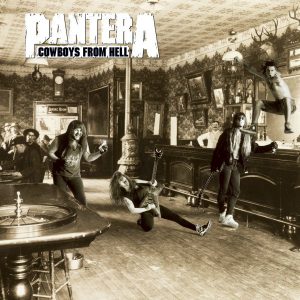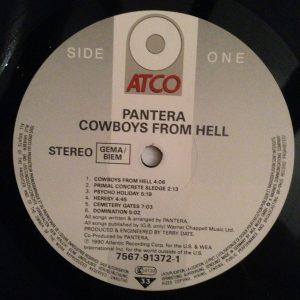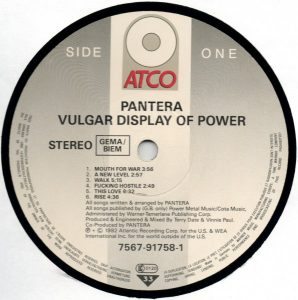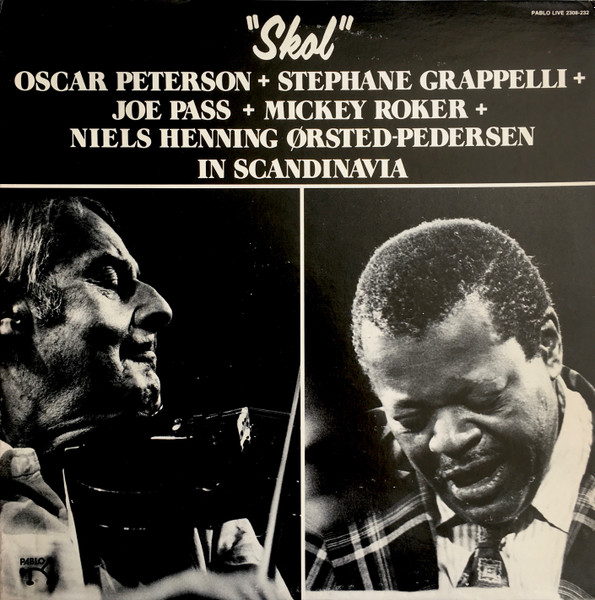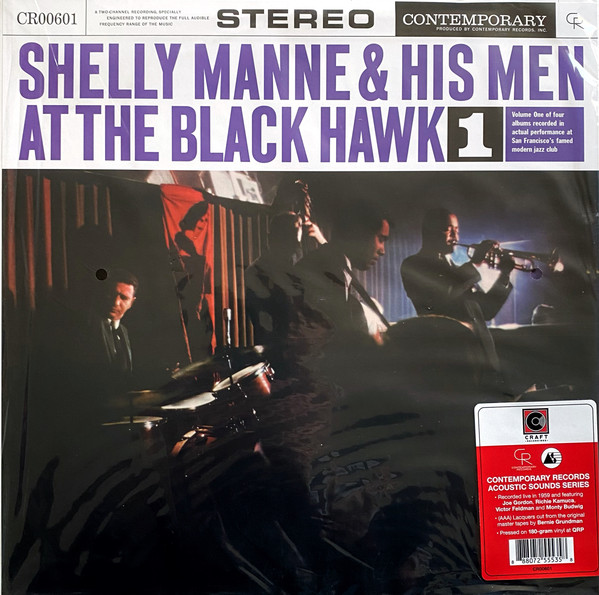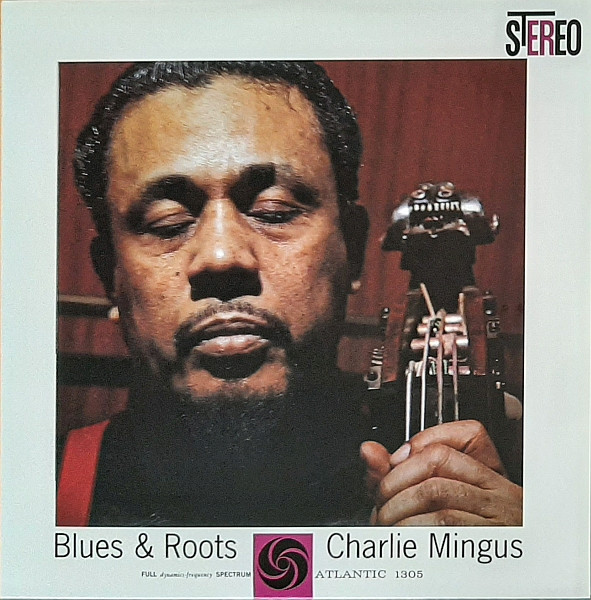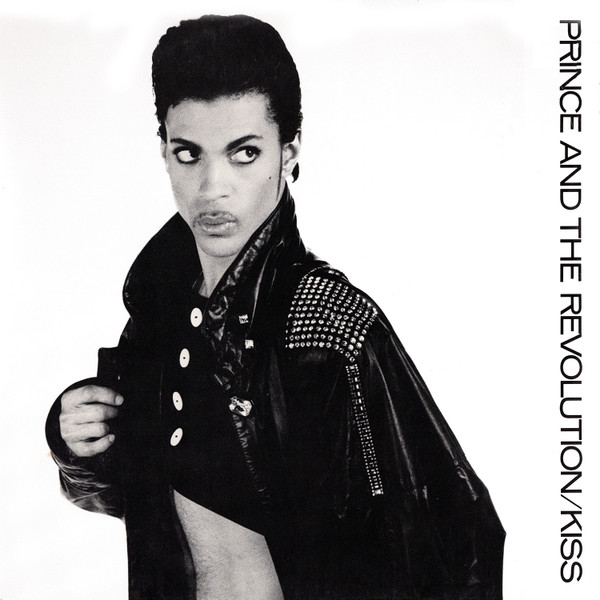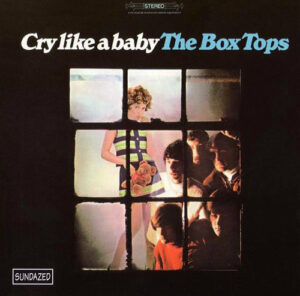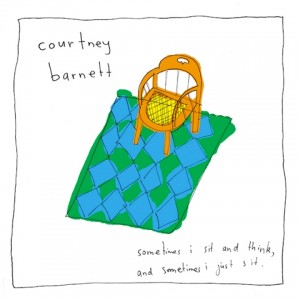This is an ongoing project by Claude Lemaire of Soundevaluations
73. The Stooges, The Stooges. Elektra – EKS-74051 (1969), 33 1/3 rpm. Genre: garage rock, psychedelic-tinged hard rock, proto-punk, avant-rock
Clearly there must be something lurking in those waters but thankfully this has nothing to do with the tragedy that hit Flint in 2014. Michigan's music scene gave birth not only to the early years of techno, but reaching further into the past, to Detroit blues, Motown, the MC5, Alice Cooper, and The Stooges. Move over Larry, Moe, and Curly, and make way for Dave, Ron, Scott, and Iggy. And while the leader's stage name may be Pop, no one would dare ascribe that qualifier to the iconic quartet's self-titled debut. Recorded in April 1969, and released in August that same year, the landmark album was way ahead of its time for preceding the punk movement by roughly six-seven years, yet it also clearly clings to its late 1960s surroundings stirring psychedelic fuzzed solo leads with raw garage-hard rock—reminiscent no doubt of their Psychedelic Stooges forebears. Produced by John Cale—ex-member for Andy Warhol's venturous Velvet Underground—one can clearly hear through his electric viola playing on the long, and repetitive "We Will Fall", the VU's dark decadent ambiance particularly permeating this track. In fact, I would have favored shortening the latter in order to unleash the premature lead guitar fade-out on "I Wanna Be Your Dog"—where Cale pounds the piano riff all through its too brief three minute duration. On "Ann", one could be fooled that Jim Morrison entered the studio, and took over—not that far-fetched given both groups shared the same Elektra facilities. The recording quality is outstanding, and among the best in my book regarding this genre, and similar 'bare-bones' music styles. What sets it apart from the era—and much of rock in general—is how deep in the lows, and complementary, how high in the top end that the tape captured so well, and Lee Hulko's mastering and cutting at Sterling Sound does a fantastic job letting it all through. The very dry studio sound lends itself perfectly for the band's raw power, giving the guitar a small basement directness with edgy realism, as well as imparting Iggy's vocals with a crisp forcefulness delivery that sharpens lyrics' intelligibility. Drums and bass lend ample support to the other end of the scale. Unfortunately no recording nor mixing engineer is credited but it kinda resembles a mixture of two of my favorite rock engineers: Eddie Kramer, and Steve Albini—for which the latter recorded the reunited band in 2006 for their fourth album. That said, it shares more in common with Kramer's Led Zep II sound than any of Albini's Shellac releases which favor greater room sound contribution to the mix. My Columbia Pitman pressing is the second 'red Big E' copy with "The Stooges" stylized logo printed in the center whereas the original 1969 pressing completely omits the band's name from the label. Both share the same matrix/runout number so I'm guessing they should be extremely close in sound if not identical.
74. Ran Blake, Film Noir. Arista Novus – AN 3019 (1980), 33 1/3 rpm. Genre: Third Stream, contemporary jazz, free-form jazz, big band, film noir overtones
Even prior to 1957 when Gunther Schuller coined the term Third Stream to define the merging of 20th century classical music with improvised jazz, composers and band leaders—such as Duke Ellington, and Stan Kenton with his progressive jazz innovations—were exploring similar musical hybrid forms without enjoying significant sales success—nor huge critical acclaim for that matter—yet most of the public, perhaps unknowingly, appreciated it through what many would simply consider movie music. As to why this musical marriage seemed so short lived? Some speculate on the close arrival on the scene of free jazz stealing the show, with a few favoring this fresher, harsher direction while most icons such as Miles, Dizzy, Sonny, et al preferred pursuing alternative avenues altogether. American composer, and pianist Ran Blake met Schuller in 1959 and both have since collaborated through teaching at the New England Conservatory of Music. With a string of albums dating as far back as 1962, Film Noir represents his fourteenth album. Produced by Michael Cuscuna, and Greg Silberman, it was recorded in January 1980 at Dimension Sound in Jamaica Plain, mixed at The Mixing Lab in Newton, Mass., and mastered at Masterdisk in New York. Engineer John Nagy did an incredible job capturing every minute nuance from close to a dozen musicians, comprising drums, electric bass and guitar, oboe, flute, tenor, alto, soprano saxes, trombone, trumpet, percussion, and Blake on piano of course—all with uncanny realism, truthful timbres, and wide dynamic, full range sound. Travelling through Third stream, contemporary, big band, and free-form jazz, it is a sheer delight for the senses for those seeking non-traditional musical structures, still working within traditional acoustic, and/or electrified instrumentation.
75. Oliver Lake Quintet, Prophet. Black Saint – AN 3019 (Italy) (1981), 33 1/3 rpm. Genre: contemporary jazz, free improvisation
If you are feeling even a bit more adventurous than the previous selection, and have a tolerance or better yet, an attraction to some dissonance in your musical diet, Prophet dishes out some serious sonorities. Co-produced by Marty Khan, and accompanied by a bevy of impressively tight musicianship of the highest caliber on drums, electric bass, piano, trumpet, and fugelhorn; American alto saxophonist Oliver Lake leads his quintet on an open-ended journey embracing free improvisation over six tracks, comprising half of his own with those of 1960s' jazz avant-gardist Eric Dolphy. Engineer Vince Traina outdoes himself recording the quintet in August 1980 at Sound Heights Studios, in Brooklyn, NY for executive-producer Giovanni Bonandrini's Black Saint label–who took over from founder Giacomo Pellicciotti. Every instrument imparts a realism rarely heard on record. The piano in particular is to die for, easily competing in vividness, force, and resonance with Ran Blake's recording above. Electric bass hits the right mark between elasticity, palpability, and precision, whereas all manner of drums, and percussive details, display solid skin impact with finesse when called for, not to mention metallic cymbal textures. The trumpet's timbre is also realistic but it is its dynamic, and powerful prowess that surprises—make that startles—us upon first listening of the odd, softer-level metronomic march preceding the tempestuous unraveling free fall. He blows it to the point of near-saturation of the mic's diaphragm as well the cutter head's dynamic range. Indeed not only will Prophet challenge your musical, and auditory taste, but put to the test your precious hi-fi rig.
76. Sonny Rollins and Coleman Hawkins, Sonny Meets Hawk!. RCA Victor – LSP-2712 (1963), Classic Records – LSP-2712 (1995?), 33 1/3 rpm. Genre: jazz, bop, free jazz overtones
When you think about it, it is incredible that two of the greatest saxophone players of all time appeared only once together on record when "Hawk" was 58 while Sonny was a mere 33. The date was July 1963 in New York City at RCA Victor's Studio "B". Roy McCurdy is on drums while Bob Cranshaw and Henry Grimes share bass duties, with Paul Bley playing piano. Five of the six songs are well known jazz standards with the final track credited to Rollins. Mostly interpreted from slow to mid-tempo, it affords us the luxury of deeply getting swept away by these two tenor giants. Engineers Mickey Crofford, and Paul Goodman present us perfection on a platter. By juxtaposing both protagonist panned up-front in their respective left-right corners, while the drums, and bass solidify the central rear of the intimate stage, we are privy to our own private jazz club delivered directly to our dwellings. Each instrument sounds so real it rivals Rollins' own Way Out West (see Selection 5 HERE)—if not surpasses it in sonic realism; no mean feat considering that LP, as well as Roy DuNann's high esteem among audiophiles. While Hawkins was already ahead of the pack since his game-changer rendition of "Body and Soul" back in 1939, I believe both sax masters on this date were near the pinnacle of their creative period. Every tiny squeal to intense bark, literally blows you over in soulfulness, dexterity, dynamics, ferocious rage, and plain pure power. We can even envision them standing right in front of us, so visceral is the imaging! Grimes' solo on "Summertime" is the most natural bass recording I've ever encountered on record, displaying the correct dryness, string tension, and wood resonance; he shows palpable presence but is never overblown in proportion with his fellow musicians. The drums sound scarily real also. I did not have an original RCA to compare with but my 180g Classic Records cut by Bernie Grundman is flawless, and I have trouble imagining where the original 1963 Dynagroove pressing might surpass it. In fact, I consider this mid 1990s reissue the best Classic Records release ever put out, as well as the best Bernie cut he is ever executed.
77. Rockets, "Atomic Control"/"Future Woman". Decca – 78.001 (France) (1977), 12", 45 rpm. Genre: space disco, electro disco, new wave, space rock
Formed in France in the mid 1970s, (Les) Rockets were a pioneering glam-outfitted quintet that featured many different musicians throughout their lengthy lifespan. Combining a rare mixture of diverse musical subgenres slightly ahead of their time—such as synth-dominated disco, and rock, while knocking on new wave's doorstep four years prior to the movement's tsunami's watershed–the band's first single, "Future Woman", made a small splash in Montreal's discotheques, and adventurous FM radio. It even preceded another similar French formation, that of Space's "Magic Fly", as well as Giorgio, and Donna Summer's landmark "I Feel Love" by nearly two years. In fact their only competing contemporaries were Germany's Kraftwerk who were the leading electronic innovators of the period minus though the disco, and rock-guitar influences found ici. The aforementioned Rockets track presented here on 12-inch format came out in early 1977, and is an extended, and better mix than the original 7-inch as well as the album version. The long instrumental intro is a delight not only for electro fans but for deejays who wish to overlap songs for many music measures. The original French Decca pressing is exquisitely punchy in the bass accompanied by just the right amount of treble detail, low compression, and overall great tonal balance. "Atomic Control" on side A, is another terrific track that did not get as much airplay, but is equally interesting, and the sound is ever so slightly even more impressive than the B side, with stupendous dynamics for the genre, and what must be the most massive, solid pounding kick drum—and snare also—in my record collection; almost frightening how a simple spiral groove can startle the senses! Produced by Claude Lemoine, the band would go on to release three other worthy club hits such as 1978's cover of Canned Heat's "On the Road Again", 1979's "Electric Delight", and 1980's Galactica.
78. Bing Crosby, Buddy Bregman, Bing Sings Whilst Bregman Swings. Verve Records – MGV-2020 (mono) (1956), MoFi – MFSL 1-260, ANADISQ 200 (1996), 33 1/3 rpm. Genre: traditional pop standards, swing, vocal jazz
Just for a moment, forget all those radio programs, movies, TV shows, variety specials, and keep in mind that it was Bing Crosby who exerted his strong influence at the time on the mighty broadcast networks, and got involved financially early on with the newly formed Ampex company to manufacture their new reel-to-reel tape recorders first introduced to the market in 1948. This technical achievement—originally developed by the German's in the mid 1930s to the onset of the allied invasion ten years later–not only far surpassed pre-existing recording methods but opened up numerous posterior possibilities such as 'sound-on-sound', multi-tracking, editing, etc. Accompanied by a seventeen-piece big band, this present 1956 mono LP was Bing's first, and only release for Verve, the crooner being primarily represented up until then by Decca—and to a lesser degree by Brunswick—while later shuffling between labels a bit more. Faithful readers know by now that my two favorite male singers, situated on equal footing, are Nat King Cole, and Frank Sinatra, but Bing comes in a close second to the pair. No doubt inspired by the latter's Swing Easy! [Capitol H528] out two years earlier, and Songs for Swingin' Lovers! [Capitol W653] just a few months prior, Bing Sings... teeters towards the same swinging crowd. My original US red/yellow label pressing is generally excellent until you put on MoFi's 1996 remastered version where every aspect sounds quite superior–be that the brass, bass, drums, dynamics, and of course the smooth tone of Bing's voice, featuring nuances, and richness not heard on the original. Probably one of the best remasters among the Anadisq series.
79. Ted Heath and His Music, Shall We Dance. Decca – SKL 4046 (U.K.) (1959), 33 1/3 rpm. Genre: big band, swing
Unlike America, where Basie, Benny, Harry, Dorsey, and Duke, were duking it out for the title 'King of Swing'; bandleader, and trombonist Ted Heath was Great Britain's answer to Glenn Miller, leading the most successful big band on British turf. Shall We Dance is his 28th album under the banner 'Ted Heath and His Music', all of which were released either on London or Decca dating back to 1951 on 10-inch. The Glenn influence is undeniable, as is those of trumpeter, and band leader Ray Anthony—who was part of Miller's orchestra—as well as the sweet sounds of The Dorsey Brothers. While Heath's big band swings, his style stirs more towards ballroom dance than Basie blues. Within that context, this LP is best served when the mood calls for easy listening over harder edge material. My original UK Decca FFSS pressing presents the band in glorious full frequency dynamic sound, with an impressive sens of relief between the front intimate dryer soloist, and the accompanying musicians, with the rhythm section solidly centered within the large, and deep soundstage. The warm tonal balance is sweetly spot on, nicely defined yet never aggressive because of the very low compression, but it definitely sounds more 'magnetic tape' than typical 'direct-to-disc'.
80. Pantera, Cowboys from Hell. ATCO Records – 7567-91372-1 (Ger.) (1990), 33 1/3 rpm. Genre: groove metal, thrash metal, power metal
Time really does fly! Hard to believe it's been roughly 28 years since I first spun this record as a deejay in a small downtown club. Hailing from Arlington, Texas, Pantera pretty much took over the metal scene by storm at the turn of the decade, stealing the thunder from then heavyweights, Slayer and Metallica. Though the latter two had spearheaded the speed-thrash metal movement since the early 1980s, and advancing the genre's evolution at an alarming rate, one can also make the case that both players had probably topped their game by 1990, and were headed more towards redundancy than fresh creativity—at a juncture when grunge was about to shift rock-metal into many directions. Meanwhile the cats from Texas had already four albums under their paws—the first dating back to 1983—but none of them had registered with an audience until the release of their 1990 breakthrough Cowboys from Hell. Among the twelve tracks we can detect traces of Anthrax, and early Metallica roaming within the faster songs but most importantly is the quartet introducing groove-based rhythms, riffs, and shuffling hi-hat to the thrash sub-genre, making it more engaging for the dancefloor. Produced, and engineered by Terry Date, the recording took place at Pantego Sound Studio, in Pantego, Texas, whereas the mixing—accompanied by the band—was done at Carriage House, Stamford, Connecticut. Vinnie Paul's drums are really nice, and punchy, providing perfectly defined double-kick along with just the right amount of cymbals, and snare. Rex Brown's bass resonates with a cold metallic sound, making good contrast with Diamond Darrell's warmly distorted guitar work. Howie Weinberg did his part with an excellent well balanced 'non-fatiguing' mastering at Masterdisk in New York. My original Euro pressing was representative of that period when CD's had taken over the vinyl landscape, and most of the music industry had abandoned US pressing altogether, relying instead on Europe to keep the presses hot. The rather-thin vinyl–typical for the era–was pressed at Record Sevice GmbH in Alsdorf, Germany. I have not heard the 2010 180g double-vinyl reissue, cut at The Mastering Lab by (most probably) Doug Sax, which all things being equal would give it a 'groove-spread' advantage over a single LP. Note that they mention: "pressed from the Original High Definition Masters"—the latter term hints at HD digital files rather than saying "cut directly from the Original Analog Tape" if such was the case in 1990, so it is hard to speculate on the sound even if Doug Sax has a good track record.
81. Pantera, Vulgar Display of Power. ATCO Records – 7567-91758-1 (Ger.) (1992), 33 1/3 rpm. Genre: groove metal, thrash metal, heavy metal
Released two years apart, Vulgar Display of Power is the follow up to the band's preceding LP, slightly surpassing it in sound, and musical mastery. Though minute thrash traces of Metallica keep resurfacing here, and there; this time hints of Slayer with soupçons of Voïvod add to what is in the end a more original, heavy and definitive statement from one of the most important metal bands of the first half of the 1990s. With this release produced by Terry Date, and drummer Vinnie Paul, the band somewhat reduces the tempo, and predominance of death-defying lead guitar solos, relying more on simple catchy riffs, odd-time signature rhythms, slight de-tuning (lower), and back-vocal call and response patterns similar in style to New York's Agnostic Front. All of the above are well implemented in their signature song "Walk". Philip Anselmo's singing displays a deeper, more aggressive guttural vocal style, perfectly suited for the slower, heavier riffs. And while Cowboys had many great songs, there were a few tracks that seemed to not fit so well with the core of their new style, breaking the mood of the moment, whereas this album presents more a unified front, and wall of sound—similar to Metallica's ...And Justice for All [Elektra 60812-1]. Once again the recording quality is up there among the very best metal LPs—a genre often overly-compressed unfortunately—and superior mixed, and tonally balanced than most Metallica and Maiden releases just to name two of the 'biggest' sellers of the genre. Like the previous entry, it also was initially not pressed domestically, so my copy is the original Euro pressing done at WMME Alsdorf in Germany. If you limit yourself to only one Pantera LP, this is the one to get. Like the previous entry, I have not heard the 2010 180g double-vinyl reissue cut at The Mastering Lab by Doug Sax, which all things being equal would give it a groove-spread advantage over a single LP. Note that they mention: "pressed from the Original High Definition Masters"—the latter term hints at HD digital files rather than saying "cut directly from the Original Analog Tape" if such was the case in 1992, so it is hard to speculate on the sound even if Doug Sax has a 'good track record', and did excellent work on the Slayer box set compilation.
A final note:
Now don't go bonkers if you have not found your favorite recording included in this List, just remember: we are still at the beginning of a long long journey...into sound.
For more from Claude Lemaire go to his blog...
http://soundevaluations.blogspot.ca/







